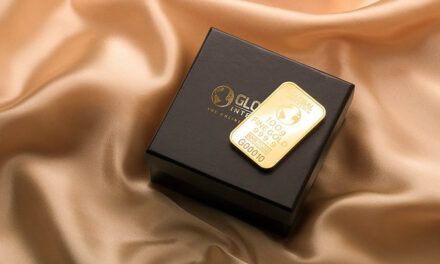Here we cover some key points about Caviar and Diabetes. Is Caviar Good for Diabetics? When it is bad for diabetics? are some of the questions we will discuss here.
Seafood is generally beneficial to our health. It’s usually recommended that we eat them. However, when it comes to people with diabetes, special care is always given to what they can and can’t eat. This Is because of the sensitive nature of their health.
There have been numerous arguments on whether people with diabetes can eat Caviar comfortably, although Caviar may bring numerous health benefits. However, no definite conclusion has been reached for this concern.
Some believe that Caviar is good for diabetics, while others believe that it is not good for them.
In this article, we will explore the numerous health benefits of Caviar and how everyone, including diabetics, can benefit from it.
Let’s start by defining Caviar. What is it?
What is Caviar?
Caviar, also known as fish roe, is an unfertilized fish egg. True Caviar belongs to the Acipenseridae family, and it comes from wild sturgeon.
The Caspian Sea and the Black Sea were the major sources of worlds Caviar for a long period, but recent farm produced Caviar has become popular because the wild sturgeon population has been greatly depleted as a result of overfishing.
It is a salt delicacy usually served cold.
Caviar is gotten or harvested through different means. The Caviar with the highest quality comes from the egg harvested as the females prepare to spawn. Also, sturgeon are caught in the wild as they move from saltwater to fresh tributaries to lay their eggs.
Sturgeons are also gotten in fish farms by monitoring through ultrasounds to ascertain when their eggs are ready for harvesting.
Types of Caviar
Different types of sturgeon caviar have been consumed for so many years, but the status of true Caviar has not been achieved.
Amongst all the types of Caviar available, there are 5 major types.
1. Beluga caviar
Beluga caviar produces the most sought-after Caviar.
The beluga sturgeon is a large prehistoric fish that weighs up to 3,000 pounds and can also be up to 15 feet in length. Beluga caviar is rich and does not contain the normal fishy taste at all. It ranges in colour from pearl grey to dark, making it earn the moniker of Black Caviar.
2. Kaluga Caviar
This particular Caviar is also large. It is a freshwater sturgeon with Caviar matching the taste of Beluga Caviar.
The eggs of Kaluga caviar are smooth with a slightly-salted buttery flavour.
3. Osetra caviar
Osetra caviar has sturgeon eggs that are brown to golden in colour. They are slightly smaller than beluga caviar.
The prices of the fish vary. The older fishes are depicted by how light the eggs are, and they are more expensive.
It has a naturally salty sea-like taste.
4. Sevruga caviar
This Caviar is a combination of the eggs of three types of sturgeon from the Caspian Sea. These sturgeons are sevruga, starlet, and Siberian sturgeon.
Sevruga caviar is one of the most demanded types of Caviar with small eggs that are small with a grey colour.
It has a distinct buttery flavour.
5. American Caviar
American Caviar is derived from fishes such as lake sturgeon, wild Atlantic sturgeon, and white sturgeon.
The United States was a leading producer of Caviar in the nineteenth century. Even now, there was a resurgence, and American Caviar has once again become popular.
Types Of Caviar Based On Its Colour – What’s The Difference?
If you wish to get the best out of Caviar, you must engage all your senses, including taste, smell, and touch. However, the different colours of Caviar reveal different things about the taste and texture.
Remember that colour is an important part of your caviar experience, and by just examining the colors of the pearls on your spoon, you can learn so much.
Let’s explore a bit more about Caviar based on its color.
- Black Caviar
Black Caviar seems to be the most popular Caviar that you will see in most restaurants. Even in movies, colors of Caviar are usually depicted to be black.
However, only a few caviar products are fully black in colour. You will find out that most fishes come from a family of sturgeon, yet they still have black colour, and some still bear names with Caviar attached to them.
Using the American Caviar as an example, the paddlefish caviar is quite popular, but it is not from the sturgeon family, hence making the name caviar is attached to it inappropriately.
On the other hand, American Hackleback caviar comes from the sturgeon roe and has a jet-black colour. Black Caviar, therefore, covers roe that comes from the sturgeon fish.
- Silver and grey caviar
If you pay closer attention, you will find out that most true caviar pearls have some variation of silver and grey colour.
A lighter grey and a shiny silver could indicate a higher grade of quality in the Caviar itself.
Beluga caviar, which is the most sought Caviar, has a roe from the beluga sturgeon. It features steely grey pearls and a shiny exterior.
Kaluga caviar also has a deeper, glossy grey colour.
- Jade and green caviar
If you detect shades of green in your Caviar, it could mean that the sturgeon was fed more of a vegetarian diet, or it might mean that it gave the eggs when it was younger.
- Amber, Gold, and Brown Caviar
On some caviar pallets, you can find variations on brown with shiner versions of bronze, gold, and amber. It usually comes from Osetra, Kaluga, and White sturgeon.
- Red Caviar
This red Caviar comes from a couple of different types of fish, but most commonly from Salmonidae. This red Caviar is not true Caviar rather, it is a non-sturgeon fish roe.
Health Benefits of Caviar
Asides from the great taste that caviar presents, it also provides numerous health benefits.
The health benefits include;
1. Caviar is a nutritional powerhouse
One may think that for you to get the best out of Caviar, you will need to eat a very large quantity. Not really!
It will surprise that even the smallest amount of Caviar provides an interesting nutritional profile.
The nutrients provided by one ounce (28-gram) of Caviar includes
Protein: 75
Carb: 1 gram
Selenium: 34% of the DV
Calories: 75
Iron: 19% of the Daily Value
Vitamin B12:236% of the Daily Value
Sodium: 18% of the daily value
EPA: 800mg
DHA: 1,080mg
The very striking thing about this nutritional profile is that just 1 serving gives you double your vitamin B12 daily requirement.
Vitamin B12 is a great asset for the development of and function of your nervous system, as well as the production of DNA and red blood cells.
Caviar also produces a small amount of calcium and vitamins A, D and E.
It will also interest you to know that a single serving of Caviar provides you with omega-3 fatty acid known as eicosapentaenoic acid (EPA) and docosahexaenoic acid (DHA). That might even be the reason for Caviar’s numerous health benefits.
2. Caviar may help in the improvement of brain and mental health
The omega-3 fatty acid contained in Caviar may help to promote brain and mental health. From research carried out, it has been deduced that EPA helps in improving mood disorders, and DHA maintains brain structure.
Omega-3-fatty acid plays a key role in fighting inflammation of brain cell membranes. By reducing inflammation in the brain, mental health decline, as seen in Alzheimer’s disease, can be reduced.
Another factor that affects mental health is depression. Research has shown that people who suffer from depression usually lack omega-3-fatty acids. This inference suggests that taking omega-3-fatty acid can serve as an antidepressant.
However, more research is still needed to correctly ascertain whether Caviar directly affects the brain and mental health.
3. Caviar may help reduce signs of ageing
Omega-fatty acid has numerous health benefits. Due to the high content of omega-3-fatty acid found in Caviar, it has been studied for its skin health benefits.
In a test tube test carried out, it was found that DHA extract from Caviar helped in stimulating adipocytes to produce adiponectin. In wound healing and anti-inflammatory processes, adiponectin plays a major role. Also, adiponectin promotes collagen synthesis and also helps to prevent the breakdown of collagen fibres.
Another study also found out that a serum containing caviar extract and other ingredients helps to improve skin smoothness, firmness, and dryness along with fine lines and crow’s feet. Note, that it has not yet been ascertained if caviar extract can have the same effect on its own.
4. Caviar tends to improve male fertility
The omega-3 fatty acid is said to play a good role in improving male fertility. Low DHA levels in men usually suggest low sperm quality and are usually associated with men suffering from infertility.
Sperm on its own usually have high DNA content. However, highly fertile men do have higher blood and sperm levels of omega-3 fatty acids.
This suggests that eating omega-3-rich foods may help in improving sperm structure, shape, and fluidity, which may also help sperm bind more easily to eggs to increase fertility.
5. Caviar may help in promoting heart health
Like earlier stated, the high caviar content of omega-3-fatty acid may be the major reason for its numerous health benefits. As for heart health, omega-3-fatty acids are useful in preventing and managing risk factors for heart disease.
Omega-3 fatty acid helps to reduce heart rate and constriction of blood vessels to lower blood pressure.
It also lowers blood triglyceride levels and increases HDL (good) cholesterol levels.
Also, omega-3-fatty acid can help prevent your blood platelets from clumping and forming clots, thereby reducing the chances of stroke.
Since Caviar is a rich marine source of omega-3-fatty acid, it may help to provide all these benefits.
6. Caviar may provide a great boost to your immune system
Still, on omega-3-fatty acid, it can help in the restoration of the barrier function of your skin, intestines, and lungs. This helps to prevent the passage of harmful bacteria to keep you healthy.
They also help reduce pro-inflammatory markers, showing their role in fighting inflammation.
They can also help to repair damaged white blood-cells, because white blood cells are necessary to keep you away from disease.
Caviar contains a good amount of omega-3-fatty acid and selenium, which will help to support the immune system.
What Does Research Say?
Research has shown that Caviar has good nutritional content, which helps in improving the general well-being of the body. Whether you take Caviar in small or large quantities, you will get a good nutritional value.
One of the major nutrients which contributes to caviars’ important nutritional content is omega-3-fatty acid. Omega-3-fatty acid has numerous health benefits, which are very beneficial for our general wellbeing.
Is Caviar Good For Diabetics?
People with diabetes and their health care providers already know that it is not just enough to treat diseases solely with conservative measures.
It is necessary for diabetic patients to put a check on the glycaemic index (GI) of their food, the calorie content of their foods, and the amount of food they consume.
People with diabetes can eat fish, but the major concern to this is the animal proteins and salt contents.
Diabetics can eat Caviar, especially the red and black Caviar but in strictly limited doses.
Some medicinal properties of Caviar are important in the treatment of diabetes mellitus.
Some of these medicinal properties include;
- Caviar offers increased insulin resistance.
This can be due to a good number of protein inclusions, fatty acids, and good cholesterols.
- Caviar can help to reduce risks of developing vascular thrombosis, pathologies of the cardiovascular system and atherosclerosis.
This could be due to the high number of antioxidants present in Caviar.
- Caviar can help prevent the premature development of diabetic polyneuropathy.
- Vitamins and trace elements present in Caviar can help strengthen the body’s defenses, thereby reducing the frequency and duration of respiratory diseases.
- Caviar is good for the hematopoietic system as it helps to reduce the risks of developing anaemia.
The glycaemic index of Caviar is low, and it is good for people with diabetes.
When Caviar is Bad For Diabetics?
In some cases, Caviar can be bad for people with diabetes because of its very high salt content.
- Avoid Caviar as a diabetic if you have kidney pathologies and a tendency to edema.
This is because of the high salt content of Caviar. Salt retains fluid in the body, and it will cause swelling of the arms and legs, which is not safe for people with diabetes.
- If you are a diabetic and you have arterial hypertension, you should avoid Caviar.
This is because the high salt content will cause fluid retention, which will turn cause a big hike in blood pressure, and this will be followed by shortness of breath, dizziness, and pain in the head, as well as sternum.
- If, as a diabetic, you have an individual intolerance or allergy to Caviar, you should avoid Caviar.
Cautions!!!
If you must take Caviar, especially as a diabetic, you should not consume Caviar more than 2 times a week. When you abuse salty food, it will lead to the development of edema, arterial hypertension, and kidney damage.
Caviar contains purines, and when used excessively, it can lead to the formation of kidney stones.
If you have a severe form of diabetes mellitus, do not eat Caviar, if you have not previously discussed with your doctor. Ensure that you always keep in touch with your doctor because the adverse effect may arise if you misuse Caviar.
When buying Caviar, try and buy the ones in glass containers so you can evaluate its consistency and appearance.
Avoid using products that have an unpleasant odour, mild, blood, stretching threads.
Always check the expiry date of the container.
Tips For Preparing Caviar Safely For Eating
If you want to get the best out of Caviar, the following tips will help you to prepare Caviar adequately and get the best out of its nutritional contents.
- You can make a caviar sandwich.
When you get a slice of black bread, you can dry it in a toaster to a crouton state.
Put 2 cucumber circles and 1 teaspoon of Caviar on top.
You can serve this as a breakfast or snack.
- You can prepare and serve Caviar as a salad sea wave.
- You can make pancakes with Caviar.
You can make pancakes from a bucket of wheat flour
without using yeast.
Put 10-12 grains of Caviar in each Caviar and wrap it in the form of an envelope.
Caviar greatly complements fresh vegetables, eggs and bread. Avoid mixing it with dairy products as this can cause bloating and gas formation in the intestines and also diarrhea.
When using Caviar in salads or other complex dishes, avoid adding salt. This is because Caviar already has a great amount of salt content.
Conclusion
Caviar is a good fish product that offers so many nutritional benefits. It contains so many nutritional contents which are helpful and beneficial for our general wellbeing. Caviar, asides from having good nutrition, also has a very great taste.
It is quite expensive to get, but the high cost greatly matches the nutritional value it provides. When eating or buying Caviar, especially as a diabetic, it is essential that you take some necessary and recommended precautions.
There are still some controversial opinions on whether Caviar is good for people suffering from diabetes mellitus. Until a definite conclusion is reached, if you must eat Caviar as a diabetic, it is important that you stick with small quantities (as noted above) or go in line with the recommendations of your health care provider.


















